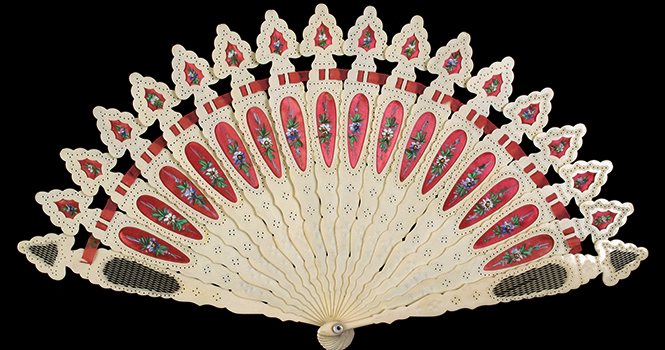Kent Museum sets out to explain the art of the fan
November 14, 2012
A delicate palmette fan sits in the Kent State University Museum. A card, signed by one Arthur Madry Davis circa 1905, is attached: “Something pretty for my beautiful one.”
This leaf-shaped fan is one of approximately 50 fans included in the upcoming Fandemonium exhibit set to open Friday at the museum.
Museum curator Sara Hume said a few of the fans, like the one from Davis, came to the museum with small notes still attached to them.
“None of the fans came to us with personal stories about the original owner,” Hume said. “But this note suggests that the fan was a gift and a token of love and affection.”
Hume said the idea for the exhibit came about after a speech Jean Druesedow, the director of the Kent State University Museum, gave to the Fan Association of North America last April.
“The exhibition brings together the highlights of the fans from our permanent collection,” Hume said. “The pieces included range from the 18th century to the early 20th century. The exhibition will be organized according to the types of fan — lace fans, feather fans, Chinese export fans, etc.”
There are also a number of novelty fans, which show the range of possibilities for fan design, Hume said.
“One fan folds up into a tube that looks exactly like a cigar, but when it is extended, it becomes a round fan decorated in the American style,” Hume said. “There is also a fan with small plastic blades that spin when the mechanism is pushed. Unfortunately, these novelty fans depend a lot on the action of the user, so it is a challenge to allow the visitors to fully appreciate them.”
Druesedow explained how fans were not only used to fan the user but also to engage in flirting.
“There’s a little bit of a myth, the language of the fan,” Druesedow said. “But yes, in fact, there is a language of the fan. There are flirting fans that have little mirrors from the eighteenth century. It’s pretty funny. You could look over your shoulder and see who was looking at you.”
Druesedow is excited that this newest exhibit will be incorporating fans from Kent’s own collection.
“There are teeny-tiny ones and there are beautiful painted ones and feathered ones from the ‘20s,” Druesedow said. “There are all kinds of fans.”
One of the earliest favored accessories is the fan due to its practicality balanced by its equally decorative and ornate nature.
Hume said that through centuries and across continents, a variety of fans have developed.
“This exhibition explores these different shapes and styles,” Hume said in a press release. “From hand-painted rococo designs of the 18th century to celluloid, art-deco pieces from the 20th century, the variations are remarkable and stunning.”
Hume describes how visitors will be able to observe both the continuity and the developments among the different types of fans.
“This exhibition is intended to allow visitors a peek at the variation in fan design and the incredible craftsmanship and intricacy of the work,” Hume said.
Fandemonium will be in the Alumni Gallery of the museum from Friday through Oct. 6, 2013.
Contact Alicia Crabtree at [email protected].

























